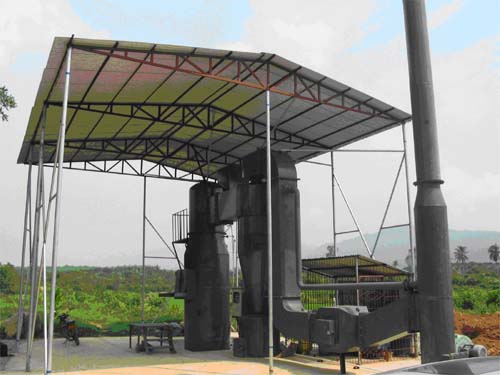
The Device (LU Gongxuan)
The harmless and timely treatment of waste has been a challenge faced by scenic spots and natural reserves in China. As far as the treatment of waste in these areas is concerned, on one hand, there’s not enough landfill site; on the other hand, the long distance to the industrial areas makes the transportation cost of waste extremely high.
In view of this, the National Engineering Research Center of Fine Petrochemical Intermediates of the Lanzhou Institute of Chemical Physics (LICP) of the CAS has developed a waste treatment device especially for scenic spots and natural reserves in cooperation with Yixing Shengkang Environmental Protection Corporation Ltd.. This device can convert those rubbish disposals into tiny ashes through pyrolysis, second incineration and catalytic oxidation. The ashes formed in this way are rich in potassium and part of them can be used as inorganic fertilizers.
With the traditional waste incineration techniques, the waste has not been fully incinerated. Therefore, toxic intermediate products can be easily formed.
The researchers of the LICP have made innovation in the design of the device. They have added catalysts which show excellent activity for the oxidation of intermediate products after second incineration. Through this, the toxic substances can be fully oxidized over catalysts and are converted into harmless carbon dioxide and water.
The device has passed the check of the environmental protection department and it can meet the state emission standard.
The device can process 100kg waste per hour with the power consumption of about 15 kw/h. It can meet the needs of solid waste treatment of most scenic spots and natural reserves in China if operating 7 hours per day.
The device has already been established in Yanuoda Rain Forest Scenic Area in Sanya, Hainan Province and undergone the intense heat of summer and tropical storm since put into operation in June 2010. It has been in stable operation for over 100 days.


